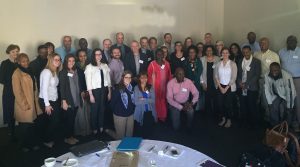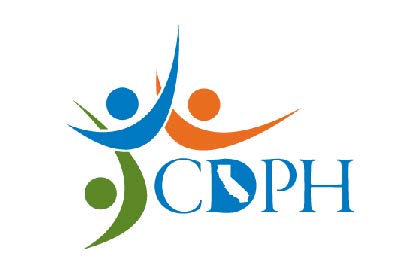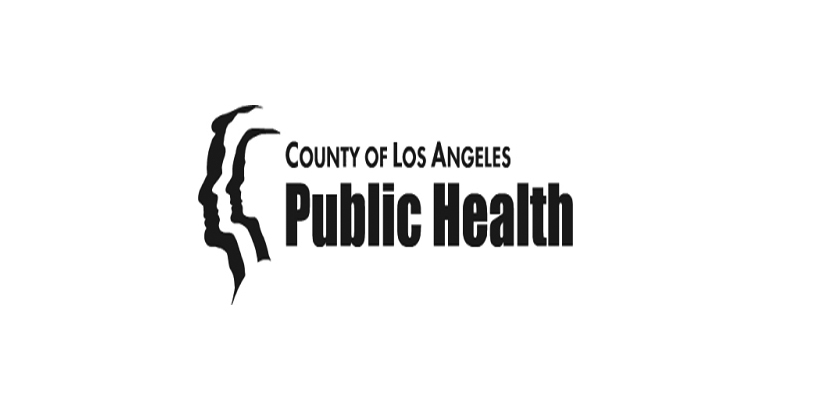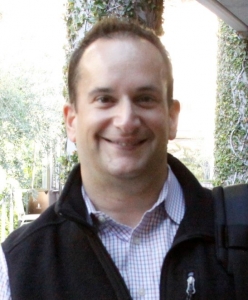The links between alcohol use and abuse, and HIV, are not difficult to imagine. From its role in risky behavior, to its impact on overall health, alcohol exerts an influence on HIV acquisition, treatment adherence, and illness management – inevitably negatively.
Preceding the highly-publicized International AIDS Society Conference (IAS) in July 2016, the National Institute on Alcohol and Alcohol Abuse (NIAAA) held the first of a series of three conferences in Durban, South Africa, on alcohol as a barrier to eliminating HIV.
Driven by the goals of reviewing priorities for alcohol-related HIV research, identifying appropriate interventions to meet the challenges posed by the alcohol-HIV nexus, and establishing a network of collaborative HIV researchers, the meeting drew attendees from different countries.
Key speakers included conference hosts, Professor Mary Jane Rotheram-Borus of UCLA, Professor Mark Tomlinson of Stellenbosch University, the NIAAA’s Coordinator of Alcohol and HIV research, Dr. Kendall Bryant, and Dr. Charles Parry from the Medical Research Council, South Africa.
Prof. Rotheram Borus opened the meeting with a summary of the implications which the new, global focus on HIV prevention and treatment has for the HIV-alcohol agenda. During the course of the event, research priorities were re-examined, with consideration of new combination prevention treatment options, changes in guidelines for HIV Treatment Continuum and the HIV Prevention Continuum. It was also an opportunity to plan a submission for a special issue for AIDS on the impact of alcohol on the HIV Prevention and HIV Treatment Continuum.
Dr. Kendall Bryant from NIAAA addressed current priorities for reducing the role of alcohol on HIV in sub-Saharan Africa. Framing the meeting’s focus, Dr Bryant opened with a presentation on international priorities and emerging technologies which are shaping the HIV and alcohol research landscape today.
Bryant’s emphasis was on opportunities for collaboration and creativity within alcohol and HIV research.
The most readily modifiable risk factor for HIV, Bryant noted, is alcohol use. And, as a consequence, this should be the focus of cross-agency collaboration to curb alcohol use. Specifically, he said, this should entail developing and implementing a core set of HIV program indicators, and supporting data sharing and increased transparency between researchers.
Speaking on behalf of NIAAA, Bryant spoke of his commitment to ensuring that the funds under his body’s control were supporting the highest priorities in alcohol and HIV research. These should include a focus on improving HIV prevention strategies amongst individuals who drink, and improving the uptake and consistent use of PrEP, PEP, and strategies to improve HIV testing and entry into treatment for women and men who drink, amongst others.
Next, Dr. Parry, who addressed the meeting participants on Current Priorities for Reducing the Role of Alcohol on HIV in sub-Saharan Africa, drew attention to the ongoing severity of the HIV crisis in southern Africa, as well as the culture of heavy episodic drinking (otherwise known as ‘binge-drinking’). The latter, Dr. Parry warned, is likely to worsen, given the ever more competitive nature of the alcohol business.
Against this backdrop, Dr. Parry explained, work around HIV and alcohol acquires a certain urgency. But with urgency comes innovation, which Parry outlined in his speech. Exciting new frontiers for alcohol-related HIV research, he noted, included technological innovations to test for alcohol use, and new interventions for reducing alcohol use amongst pregnant women with HIV/AIDS (PLWHA).
However, Dr. Parry’s talk also reminded the researchers of the sobering realities of intervention in low and middle income settings. Ongoing threats to the efforts of local intervention attempts include the gaps in availability of services to address harmful use of alcohol (access to treatment, pharmacotherapy) for many local people, the stigma associated with drinking amongst PLWHA, and concerns about the ability to translate intervention research findings into the real world.
Addressing this latter issue, the next speaker, Dr. Alastair van Heerden from the Human Sciences Research Council, spoke about the possible future uses of technology in reducing alcohol use. From mHealth interventions (using smartphone technologies to improve health behaviour) to benefit communities affected by alcohol and HIV, to drawing on tablets and apps to improve the speed and efficiency of data collection for researchers, van Heerden highlighted some of the potential contributions to be made by advancements in technology.
One of the main outcomes of the conference will be the publication of a set of research priorities in alcohol-related HIV research. Dr. Tomlinson introduced the priority-setting process to the group, a means by which researchers around the world can settle on a set of core focus areas for their research going forward. The process consists of the attendees generating research questions, and then rating the submissions across a number of dimensions to winnow out the best candidate foci. The research priority setting process, begun by Dr. Tomlinson during the morning of the conference, will culminate in the assembly of a document outlining the key focus areas for the researchers in the group, and others like them around the world, going forward.
Over the course of the day, the attendees had the opportunity to participate in discussion groups targeting special populations affected by alcohol use, structural interventions for alcohol misuse, and – finally – how to address comorbidities among alcohol abusers. Such discussions may contribute to the development and delivery of interventions which are effective and sustainable.
The Durban meeting was the first of three conferences on the topic that will seek to develop future work in the area and it has been set up as a stepping-stone toward measurable progress in alcohol-HIV research.
Click here for a student’s blog about her Journey to the African Cape.
 In Africa, HIV prevention has been most successful with women, not men. For example, young, South African men aged 18-29 years continue to have a high incidence of HIV, frequent drug use, low HIV testing rates, concurrent sexual partnerships, and low rates of HIV testing and utilization of medical care. Innovations are needed in how, when, and where we engage men in HIV prevention. With R34 funding, we successfully demonstrated the feasibility of engaging young men with soccer and vocational training to reduce drug use. We randomized two neighborhoods to either: an intervention (soccer and vocational training contingent on behaviors at soccer); or a delayed-delivery control neighborhood. Almost all eligible neighborhood men were recruited (95%; N=142) and 90% reassessed at 6 months. In the intervention condition, 80% of young men regularly attended soccer and 55% earned entry to vocational training. Intervention men completed drug tests at soccer (with uptake rising over time and drug use decreasing), and increased employment over six months, compared to control men. HIV testing did not increase, based only on self-reports. Qualitative interviews of men, coaches, and family members demonstrated the program’s benefits in shifting men’s role in their homes and communities, although attitudinal shifts towards women were minor.
In Africa, HIV prevention has been most successful with women, not men. For example, young, South African men aged 18-29 years continue to have a high incidence of HIV, frequent drug use, low HIV testing rates, concurrent sexual partnerships, and low rates of HIV testing and utilization of medical care. Innovations are needed in how, when, and where we engage men in HIV prevention. With R34 funding, we successfully demonstrated the feasibility of engaging young men with soccer and vocational training to reduce drug use. We randomized two neighborhoods to either: an intervention (soccer and vocational training contingent on behaviors at soccer); or a delayed-delivery control neighborhood. Almost all eligible neighborhood men were recruited (95%; N=142) and 90% reassessed at 6 months. In the intervention condition, 80% of young men regularly attended soccer and 55% earned entry to vocational training. Intervention men completed drug tests at soccer (with uptake rising over time and drug use decreasing), and increased employment over six months, compared to control men. HIV testing did not increase, based only on self-reports. Qualitative interviews of men, coaches, and family members demonstrated the program’s benefits in shifting men’s role in their homes and communities, although attitudinal shifts towards women were minor. violence/arrests. Stellenbosch University interviewers will conduct assessments at recruitment, 6, 15, and 24 months (using mobile phones). Coaches will implement a Life Skills manual, as well as integrating cognitive-behavioral skills into problem situations that arise at games/practices, and reporting in real time via mobile phones all intervention contacts and content. Qualitative interviews will be conducted with coaches and young men (n=30 at each 6 month interval). If the RCT is successful, global program diffusion is probable by the Fédération Internationale de Football Association (FIFA) with national funding by the South African government NEET (Not in Education, Employment or Training) vocational training program, whose annual funding is typically underspent.
violence/arrests. Stellenbosch University interviewers will conduct assessments at recruitment, 6, 15, and 24 months (using mobile phones). Coaches will implement a Life Skills manual, as well as integrating cognitive-behavioral skills into problem situations that arise at games/practices, and reporting in real time via mobile phones all intervention contacts and content. Qualitative interviews will be conducted with coaches and young men (n=30 at each 6 month interval). If the RCT is successful, global program diffusion is probable by the Fédération Internationale de Football Association (FIFA) with national funding by the South African government NEET (Not in Education, Employment or Training) vocational training program, whose annual funding is typically underspent.








 Raphael Landovitz’s clinical research career focuses on optimizing the use of HIV antiretroviral therapy for both HIV treatment and HIV prevention. Dr. Landovitz was trained at Princeton University and Harvard Medical School. He completed post-graduate training in internal medicine at Brigham and Women’s Hospital (1996-1999) and Infectious Diseases and HIV Medicine at Brigham and Women’s Hospital and Massachusetts General Hospital (1999-2001). He works in the DAIDS-funded AIDS Clinical Trials Group (ACTG), HIV Prevention Trials Network (HPTN) and the NICHD-funded Adolescent Trials Network (ATN), and serves as the Clinical Research Site leader of the UCLA CARE Center Clinical Research Site for the DAIDS-funded networks. He is the principal investigator of a multisite PrEP demonstration project in Los Angeles County, and the protocol chair of Phase 2a and Phase 2b/3 studies of long-acting injectable PrEP using GSK1265744 (cabotegravir).
Raphael Landovitz’s clinical research career focuses on optimizing the use of HIV antiretroviral therapy for both HIV treatment and HIV prevention. Dr. Landovitz was trained at Princeton University and Harvard Medical School. He completed post-graduate training in internal medicine at Brigham and Women’s Hospital (1996-1999) and Infectious Diseases and HIV Medicine at Brigham and Women’s Hospital and Massachusetts General Hospital (1999-2001). He works in the DAIDS-funded AIDS Clinical Trials Group (ACTG), HIV Prevention Trials Network (HPTN) and the NICHD-funded Adolescent Trials Network (ATN), and serves as the Clinical Research Site leader of the UCLA CARE Center Clinical Research Site for the DAIDS-funded networks. He is the principal investigator of a multisite PrEP demonstration project in Los Angeles County, and the protocol chair of Phase 2a and Phase 2b/3 studies of long-acting injectable PrEP using GSK1265744 (cabotegravir).
 infusion for HIV prevention; HPTN 083 compares daily oral Truvada to a long acting injectable antiretroviral (cabotegravir) for HIV prevention. Both studies will contribute critically important information to move the field of biomedical HIV prevention forward, and in the process bring new HIV prevention strategies to the most at-risk populations of Los Angeles County.
infusion for HIV prevention; HPTN 083 compares daily oral Truvada to a long acting injectable antiretroviral (cabotegravir) for HIV prevention. Both studies will contribute critically important information to move the field of biomedical HIV prevention forward, and in the process bring new HIV prevention strategies to the most at-risk populations of Los Angeles County.
